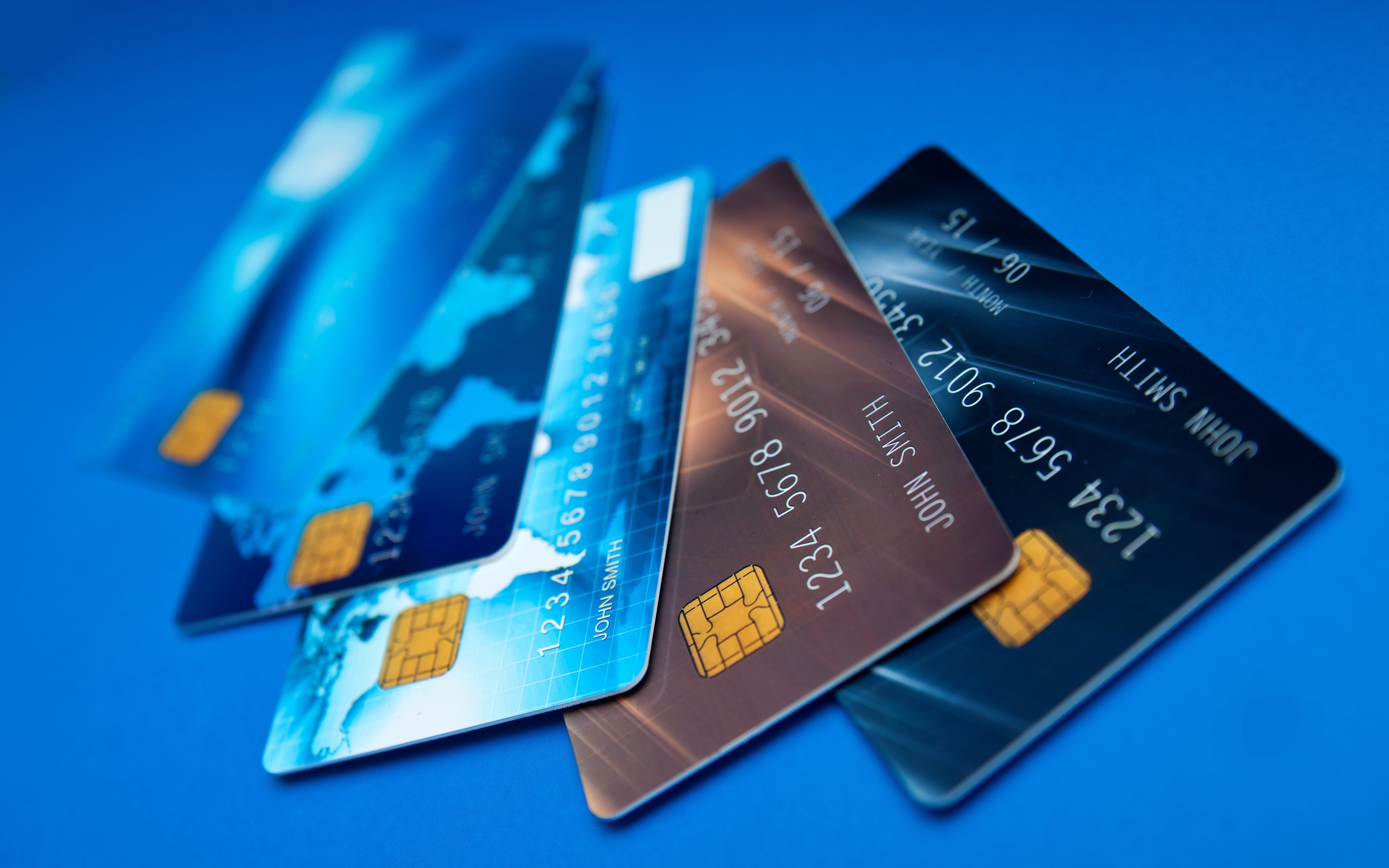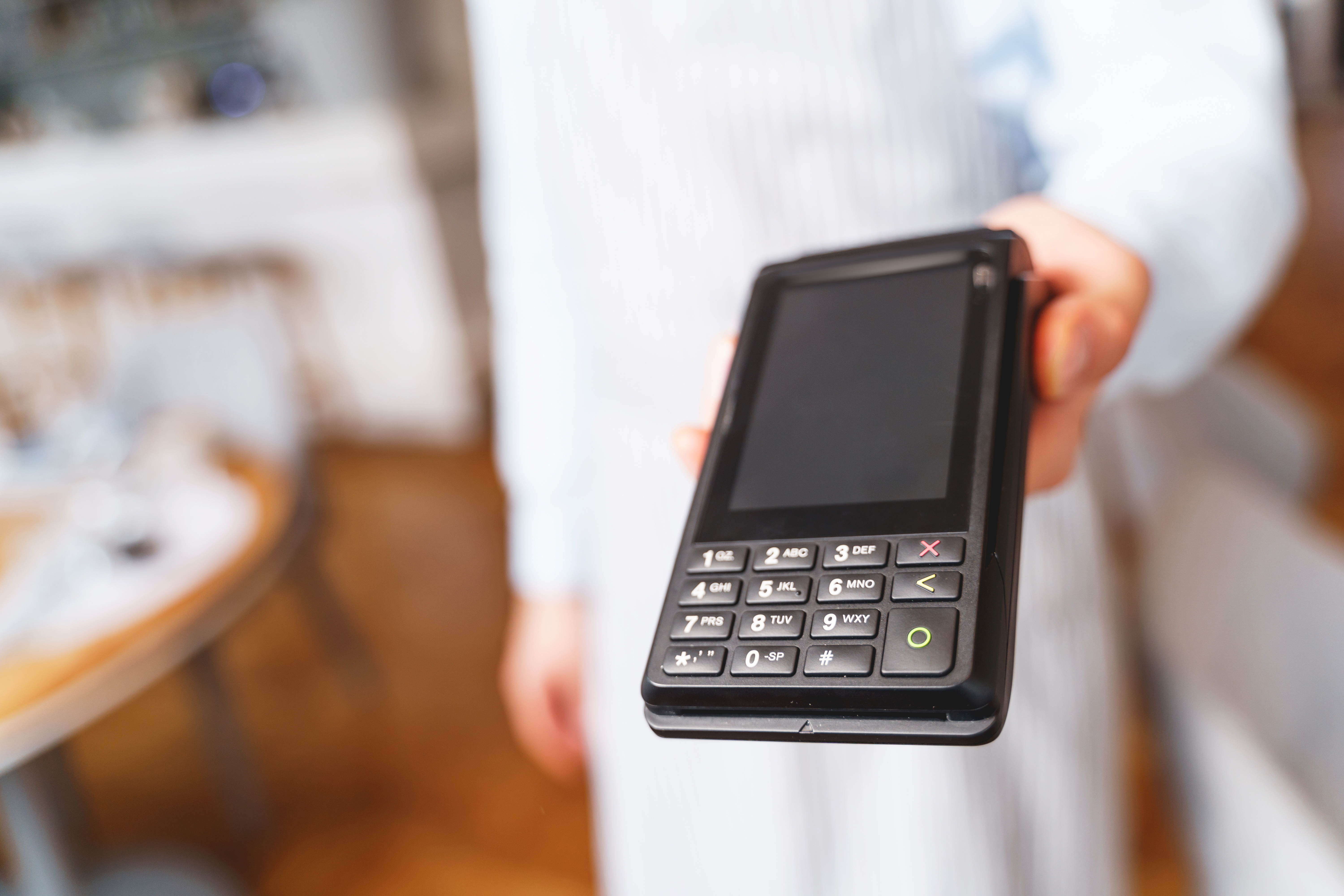The Guide to Prepaid Cards
Key Takeaways
- Prepaid cards let you load and spend only what you deposit, helping with budgeting and avoiding debt
- They work like debit or credit cards for purchases but don’t build credit history
- Fees vary widely, so comparing terms and features is essential before choosing a card
- They can be a good option for those without a bank account or trying to develop healthy spending habits

Are you struggling to get a credit card or open a bank account? Or maybe you are new to using a card and want to learn how to be responsible with plastic?
A prepaid card is the perfect solution for those learning (or re-learning) how to manage their finances. A prepaid card is a type of card that allows you to load funds on to it and use it to make purchases in the same way you would with a credit card.
Prepaid cards (also called pay-as-you-go-cards) are issued by a financial institution or a bank holding company and are branded by a major payment network like American Express, Discover, MasterCard, or Visa. These are great for individuals who don't have a bank account or credit card, or simply don't want to be tempted to spend and rack up unnecessary debt since you can use your prepaid card the same way you would a credit or debit card -- like paying bills online and making purchases in-store.
Below, we break down everything you need to know about prepaid cards, including the pros, cons, and how to find the best one for you.

Prepaid Card Vs. Credit Card Vs. Debit Card
There are so many types of cards, so how do you tell the difference between a prepaid card, credit card, and debit card?
A prepaid card can be used for purchases just like a credit or debit card, but without the added interest on your balance or the connection to your bank account. Many of these cards won't let you spend more than what you have, so you won't have to worry about any overdraft fees.
Here are some of the major features of each type of card:
Prepaid Card:
- Carry a brand of a card network (such as American Express, Discover, MasterCard, or Visa) and can be used anywhere the brand is accepted
- Reloadable
- Only the money deposited onto it can be spent
- Access cash at ATMs
- Protections and disclosures depend on the type of prepaid card
- Prepaid cards do not need to provide a periodic statement
Credit card:
- Credit cards are a loan that must be paid back, usually with interest
- Credit card issuers must disclose APRs, rates, fees, and transaction charges
- Must issue a periodic statement with your account balance
- Must notify borrowers 45 days in advance of making any term changes
- Can't increase APR or fees within the first year of the account being opened
Debit card:
- Issued by your bank
- Linked to your bank account
- Funds are taken directly from your checking account when the card is used
- Limited protections in transactions or disputes
- Banks must disclose fees
- Banks must provide a statement in the monthly cycle (or quarterly if there were no transactions)
- Must provide 21 days notice before making any changes to fees or liability limits for unauthorized transactions
- No APR requirements
How To Pick A Prepaid Card
With the rise of its popularity and competition, prepaid cards now come with a variety of features, rewards, and lower fees.
Some of the features offered include:
- A card that offers cash back and rewards can be incredibly helpful in building up a savings account connected to it.
- Cards with rewards programs or additional features (such as a savings feature or roadside assistance). These cards usually come with fees, but be sure to avoid cards with high fees with rewards.
- Cards that allow you to conduct banking online or through a mobile device. These can send text and email alerts, provide tools to help you manage your finances, pay bills, and reload your account.
- Cards with sub-accounts that allow you to share the account with your partner or children (these usually come with fees).
- Consumer protections: Because there are no federal laws or regulations to protect consumers who use prepaid cards (unlike credit cards and debit cards, which do have laws to protect consumers), finding a card with consumer protection is important. Thankfully, there are prepaid cards that do offer specific policies and protections for individuals: * Register the card with a card issuer to receive a replacement of lost or stolen funds * Zero liability of a $50 limit for unauthorized transactions * A dispute resolution process that requires your card issuer to investigate and respond to any errors you report and credit the disputed amount until a decision is reached. * Free online access or a monthly statement to view your transactions, account balance, and fees * FDIC or NCUSIF insurance or protection against the loss of your balance due to your financial institution
Is it right for me?
A prepaid card may be ideal for you if:
- You can't qualify for a credit card or bank account.
- You want to budget by curbing your spending. (After all, you can only spend what you load on the card.)
Where to shop for a prepaid card:
You can acquire a prepaid card either online or at a local retailer. We recommend researching the card issuer to gather all the information you can about their terms, conditions, and fees. You can usually find this information online or through the retailer, who may carry brochures detailing the necessary information.
Be sure to compare all of your options before purchasing a card, since it's important to learn all the perks and features while avoiding any unnecessary fees. Steer clear of any cards that make it difficult to find any disclosures and information.
What to look for:
- Look for features that allow you to pay bills online, set up recurring payments, and direct deposit your paycheck.
- Make sure that you can reload your card easily, either online, in person at a retailer, or through direct deposit.
- If you anticipate taking out cash from an ATM, check for ATM fees or free in-network ATMs in your area.
- Your card should disclose all fees, either on its packaging or on its website. After all, you want to make an informed decision.
- Look for overdraft coverage on your cards, just in case you accidentally spend more than what you have in your account. A card without overdraft protection usually carries a high fee -- $15 to $30 per overdraft.
Compare any fees:
- Activation fees: This fee may be implemented when you initially purchase and load your prepaid card and usually ranges from $0 to $30. While most cards don't charge an activation fee, be on the lookout for services that charge high monthly or transaction fees to make up for it.
- Reload fee: This fee may be charged each time you reload your card and range from $0 to $5. It may depend on the amount you add or the source of the funds (like whether or not you are loading your money from a bank account or credit card) and some card issuers may waive the fee if you use a certain form of payment or load a specific amount. Direct deposits and electronic deposits may not come with a fee. (Note: Retailers or third parties may charge a fee if they allow in-person card reloads.)
- Maintenance fee: Some prepaid cards may charge a monthly maintenance fee (usually less than $10/month). However, many of the cards that charge a maintenance fee will waive or reduce it if you reload your card through direct deposit or reload a specific amount. If you only plan to use it minimally, then a card with a required monthly fee is probably not the way you want to go. Instead, you can opt for a card that has a low fee that is charged for each purchase.
- Transaction fee: Instead of a monthly maintenance fee, some prepaid cards may charge a small per-transaction fee $0.49 to $2) for debit transactions, credit transactions, or both. These cards are ideal for those who don't spend often. (Note: You shouldn't have to pay both a monthly fee and transaction fee. If there is a purchase transaction fee, find a card that caps it at a certain amount.)
- Declined transaction fee: If you have insufficient funds in your account and attempt to make a purchase, your transaction will be declined and result in a fee. (Note: Some cards offer overdraft protection.)
- ATM fee: Nearly all prepaid card issuers charge a small fee (around $1 to $3) for withdrawing cash from an ATM that is out of network. Along with this withdrawal fee, the ATM operator may also charge a small fee for out-of-network cards. You can avoid this by opting for a card that allows in-network ATM withdrawals. If your card has ATM fees, choose a card that allows you to get cashback at grocery stores or other retail outlets without a fee.
- ATM balance inquiry fee: Some cards may charge a small fee of 49¢ to $2 is charged if you check your balance at an ATM, although there are plenty of prepaid card options that allow either online or in-network ATM balance inquiries.
- Bill-pay fee: In the case that you are planning to pay your bills online, opt for a card that charges a low (or no) bill payment fee.
- Transfer fee: Some cards may charge a small fee to transfer funds to another cardholder.
- Foreign transaction fee and currency conversion fee: Many cards charge a foreign transaction and currency conversion fee when you use your card outside of the US. Unless you plan on using your card outside the US, this fee shouldn't matter; however, frequent travelers may want to find a prepaid card with low transaction and conversion fees.
- Inactivity fee: As strange as this sounds, you could be charged a fee for not using your card for a long period of time (3+ months).
- Mailed statement fee: Card issuers may charge you a small fee to mail you a paper statement. However, you can opt out of this by checking your balance and account history online.
- Customer service fee: Avoid cards that charge a fee in order to talk to a customer service representative.
- Replacement fee: A fee that is charged in the case your card is lost or stolen.
- Account closing fee
How To Get And Use A Prepaid Card
Thinking about getting a prepaid card? You can find them at a variety of places, including:
- Online at the card issuer's website (sites like NetSpend and Card.com. This does not require an application process and you may be able to register it online to receive a personalized card!
- At a retailer (such as Walmart or CVS)
- At a local branch (such as a bank like Chase)
Once you receive your card, you can take the following steps to use your card to its full potential:
- Load the card with funds through a retailer, account transfer, cash reload, mobile check deposit, or direct deposit.
- Use your card to make purchases in the same way you would use your credit card or debit card -- in-store or online. ] * Do I choose "credit" or "debit" on a PIN pad? You can use your prepaid card either way, but whether you choose "credit" or "debit" just determines how your payment will be processed. If you created a PIN when you initially received your card, you can use "debit". Otherwise, you can choose "credit" and use your signature.
- Reload your card once the balance is low.
Prepaid Card Pros
- Your credit won't be affected by using a prepaid card.
- Prepaid cards are available for consumers with poor credit or bad banking history. You can avoid adding another inquiry to your credit history since a credit check isn't needed for a prepaid card.
- It is a great option for budgeting or for those who don't have a bank account or simply can't qualify for one.
- Some prepaid accounts offer a way to build your savings by using subaccounts (which are additional accounts under your main one). These subaccounts allow you to pay allowances and set spending or ATM limits. This is especially handy if you are looking to give your children practice with a card without adding them as an authorized user to a credit card, which doesn't allow you to set limits.
- You can avoid overdraft fees and a negative balance -- a common problem that consumers using a debit card may face. With a prepaid card and overdraft protection, you can't spend more than you have loaded onto it.
- No interest. Unlike a credit card, you don't have to pay interest on the accrued debt.
- Your funds are kept secure. If you are using a prepaid card, your bank account or credit card isn't put at risk.
- A prepaid card is an excellent way to start building good spending habits without going into debt. This is ideal for teenagers and young adults looking to get some practice and build healthy spending habits before using a credit card.
- Thanks to the Consumer Financial Protection Bureau, a new law has been implemented to require fraud protection on prepaid cards.
Prepaid Card Cons
- You can't build credit. A prepaid card doesn't function like a credit card and doesn't show lenders your ability to repay what you spend, which means you can't improve your credit. Instead, it's usually used as an alternative if you can't qualify for a credit card or bank account. Want to build your credit? Consider using a secured card or a credit builder loan.
- They can come with multiple high fees.
- Some cards may have a limit on how much you can load onto your card, withdraw from an ATM, or spend daily.
- A few retailers and merchants (such as car rental companies and hotels) may not accept prepaid cards or they may require a security deposit or documentation to use your card.

What Else You Need To Know
KnowYourCard.org is an excellent resource to learn more about laws regarding all types of cards, including gift cards, prepaid cards, debit cards, credit cards, and more.
Additionally, the Consumer Financial Protection Bureau provides information about and enforces any rules regarding financial products like prepaid cards. If you need to file a complaint against the card issuer, you can contact the CFPB by calling 855-411-2372 or [visiting their website]((https://www.consumerfinance.gov/about-us/contact-us/).
Here are our top recommendations for prepaid cards.
Do prepaid cards impact my credit?
Your payment activity on prepaid cards aren't reported to the three major credit bureaus (Experian, Equifax, and TransUnion), so there is no impact on your credit. Other types of cards -- such as secured cards and credit cards -- do play a role in your credit history.
What is the difference between a prepaid card, a credit card, and a debit card?
Debit cards are linked to your bank account and credit cards are required to be paid off after use. Prepaid cards must have funds loaded onto them before use and do not require you to pay it off after.
How do you load money on a prepaid card?
- Arrange for a check or other form of payment to be directly deposited
- Transfer funds from a checking account or another prepaid card
- Purchase a reload pack to add a specific amount to your card
- Add funds at the financial institution or retail store that issues the card
Can I use a prepaid card online?
Yes. Prepaid cards are connected to major card networks such as American Express, Discover, MasterCard, and Visa, meaning the can be used the same way -- including online purchases.
Can I use my prepaid card if the balance doesn't cover the purchase?
Yes, but you will have to do a split tender, which allows you to tell the cashier how much you want to pay with your prepaid card and how much you want to cover with another payment method.
Can I make a return if I purchased the item with a prepaid card?
Yes. You will have to bring your prepaid card when you make the return so the refund is credited back to the card.
Edited by:
Bryan Huynh
•
Product Tester & Writer

